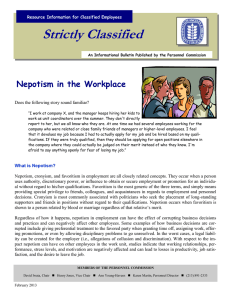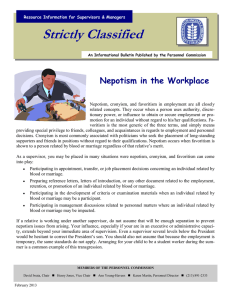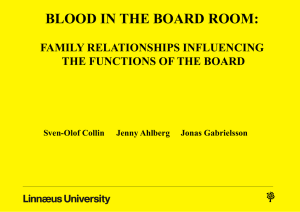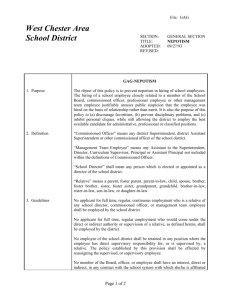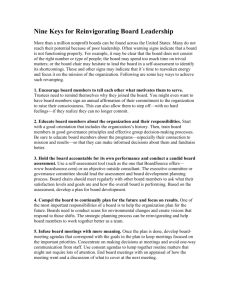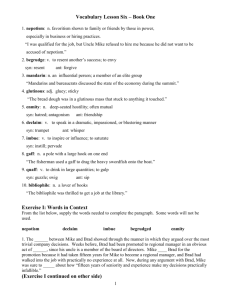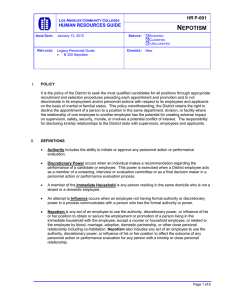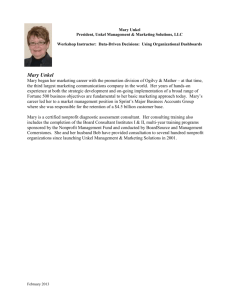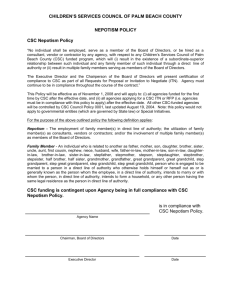BoardSource® Topic Papers and Articles Nepotism and Boards
advertisement
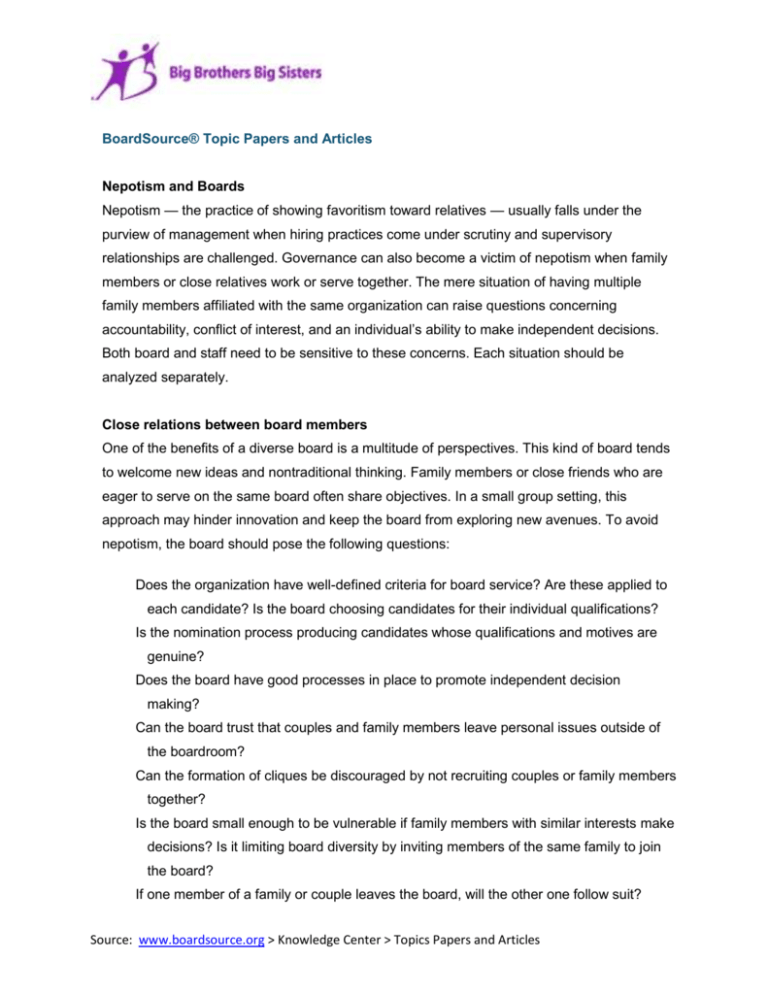
BoardSource® Topic Papers and Articles Nepotism and Boards Nepotism — the practice of showing favoritism toward relatives — usually falls under the purview of management when hiring practices come under scrutiny and supervisory relationships are challenged. Governance can also become a victim of nepotism when family members or close relatives work or serve together. The mere situation of having multiple family members affiliated with the same organization can raise questions concerning accountability, conflict of interest, and an individual’s ability to make independent decisions. Both board and staff need to be sensitive to these concerns. Each situation should be analyzed separately. Close relations between board members One of the benefits of a diverse board is a multitude of perspectives. This kind of board tends to welcome new ideas and nontraditional thinking. Family members or close friends who are eager to serve on the same board often share objectives. In a small group setting, this approach may hinder innovation and keep the board from exploring new avenues. To avoid nepotism, the board should pose the following questions: Does the organization have well-defined criteria for board service? Are these applied to each candidate? Is the board choosing candidates for their individual qualifications? Is the nomination process producing candidates whose qualifications and motives are genuine? Does the board have good processes in place to promote independent decision making? Can the board trust that couples and family members leave personal issues outside of the boardroom? Can the formation of cliques be discouraged by not recruiting couples or family members together? Is the board small enough to be vulnerable if family members with similar interests make decisions? Is it limiting board diversity by inviting members of the same family to join the board? If one member of a family or couple leaves the board, will the other one follow suit? Source: www.boardsource.org > Knowledge Center > Topics Papers and Articles Is it unfair to focus on established relationships? Couldn’t similar challenges affect other close friendships formed before or during board service? Is the board discriminating against candidates on the grounds of their family or marital status? Benefits of family service It is perfectly understandable that in family foundations the board includes numerous family members from different generations. Family is the backbone of the organization. However, family foundation boards should also embrace diversity and bring in outside members who can help balance and facilitate potential internal dilemmas. Some nonprofits get started by the force of a couple working together, however, it is not necessary for both to serve on the board as voting members. There are many other ways that a founder’s spouse can get involved with the organization without turning the nonprofit into a family enterprise. Close relations between a board member and staff Some organizations have nepotism and fraternization policies that forbid board members from having family or other close relations with staff. If a policy does not exist, each situation needs to be treated as a special case. The board needs to determine whether it can or wants to live with this potentially problematic situation. It is not optimal for the spouse or a close relative of a board member to be the organization’s chief executive. It is nearly impossible for the board member to remain unbiased and detached when the board discusses the chief executive’s compensation, evaluates performance or, in general, needs a critical eye to assess the overall success of the organization. Abstaining from voting could keep this board member out of the boardroom during most decisions. If a family member remains a candidate for the position of chief executive, the board member should resign from the board. If a close relative of a board member is in another staff position, the burden falls to the chief executive. It is the chief executive who hires and supervises the staff and must be free to choose the best possible person for a position without any fear of repercussions from the board. Here are some questions that the board and the chief executive should discuss as a proactive measure to avoid future problems: Source: www.boardsource.org > Knowledge Center > Topics Papers and Articles Does the board have a strong conflict-of-interest policy? Is there a confidentiality policy? Is a board member able to make unbiased decisions when a close friend is possibly benefiting from the outcome? Should the board be concerned about confidential issues being passed on to staff? How does the chief executive feel about a staff member having a direct contact with a board member and possibly passing on unfiltered information to his or her supervisor? Is it possible that this staff member gains an indirect influence in the operations of the organization? Would this encourage micromanagement? Close relations among staff members Family or close ties between staff members is mainly a supervisory issue. Every organization should be prepared for a situation where a staff person is supervised by a relative or a close friend. A policy preventing this can help avoid preferential treatment, including the perception of favoritism, reverse discrimination, and concentration of power. In addition, a policy can help promote a principle that superior performance matters for every employee. How to deal with nepotism The board should take the time to discuss the definition of ethical behavior and the importance of full disclosure. It should also pay attention to accountability and internal controls. In addition, it should consider expanding its view of family relations to include other close relationships. Lastly, the board should have a policy addressing conflict of interest, confidentiality, and prevention of nepotism. References Daniel L. Kurtz and Sarah E. Paul, Managing Conflicts of Interest: A Primer for Nonprofit Boards (BoardSource 2006). Berit M. Lakey, The Board Building Cycle, Second Edition (BoardSource 2007). Source: www.boardsource.org > Knowledge Center > Topics Papers and Articles

